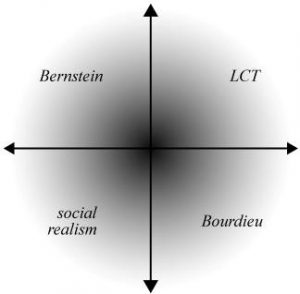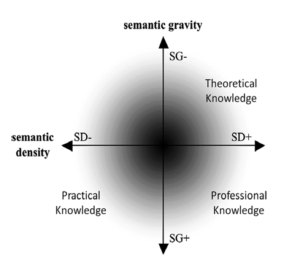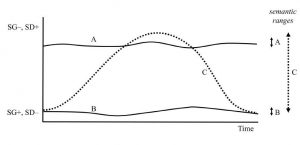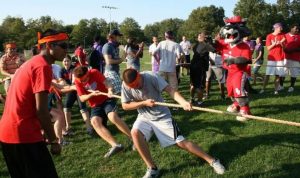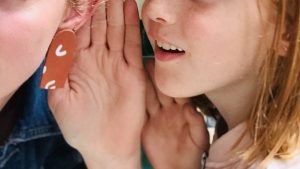Author: Richard Pountney, SIG Lead
It’s a strange kind of question, ‘does my teaching ever flatline?’ I was reminded of it recently when introducing my students to curriculum theory, in a masters module I lead, Curriculum Design and Innovation. Their reactions to the theory ranged from ‘it makes my brain hurt’ to ‘this has unlocked my thinking’ [1]. Mostly, they say, ‘we have never been asked to think about our practice in this way before’. It left me wondering what can explain this variation, and how can I help students with theory.
An academic walks past a homeless man every day on the way to work. One day the homeless man shouts out, ‘I had a dream about you last night and you gave me a hundred pounds! What do you think it means?’ The academic hesitates, thinks for a moment, and then says: ‘Tomorrow, you will find out’. The next day the academic stops at the beggar and gives him a package. The man excitedly opens it. Inside he finds Freud’s The Interpretation of Dreams.
The basis of this joke is in the mismatch of expectations, as Freud himself might have analysed. In response to a request for material contribution, the means of understanding those needs was offered. The story raises the question of whether the ‘gift’ of knowledge, in this context, was practically useless. But, as Kurt Lewin [3] famously surmised ‘There’s nothing so practical as good theory’ – because good theory guides effective action by turning knowledge into wisdom. We can agree that theories are good to inform, explain and predict practice – but mostly they are good to think with. However, what we mean by theory and its relationship with knowledge needs to be unpicked.
I should start by professing my theory. I am an educational sociologist and my sociology is a realist one. Social realists, like me, conjecture that knowledge is socially constructed and has real properties. It is a kind of coalition of theories including Field Theory (Pierre Bourdieu), Knowledge Code Theory (Basil Bernstein), and Legitimation Code Theory (LCT, Karl Maton). As a theory of knowledge, it can be used to examine innovation in curriculum, pedagogy and assessment [4]. I talk about knowledge practices and the need to get ‘under the bonnet’ of social activities such as teaching and learning, to examine the underlying basis of practice. I argue for epistemic justice as the purpose of higher education, despite claims that my discipline, Education, does not have an episteme [5].
But what kind of social theorist would I be if I didn’t use my theory to examine the problem of the place of theory in learning? One dimension of Legitimation Code Theory [6] is semantics and the two symbolic codes: density and gravity. Semantic Density (SD) is the degree of complexity of a thing, knowledge or practice. Semantic Gravity (SG) is the degree of abstraction, or distance from context. So strong gravity (written as SG+), and weak density (shown as SG-) is close to context and simple – this is practical knowledge and a good example would be playing conkers. On the other hand, weak SG and strong SD (SG-,SD+) is abstract and dense – this is theoretical knowledge and Quantum Physics is a good example. You can plot this as types of knowledge on the continuous plane below [7].
Returning to my flatline question, variations in semantic gravity and density can be plotted in a timeline, as a kind of semantic profile of any activity such as the teaching of a whole course or an individual lesson [8]. I have used it elsewhere [9] to show how it can differentiate between novice and expert knowledge. In the example of a profile I can map my lessons on theory. The dotted line C is my preference: I invite students to talk about their practice (context) and to simply state their problems (strong semantic gravity and weak density). When I introduce theory, the gravity decreases and density increases. By giving real-life examples of how the theory can be applied the curve drops down again (it waves) [10].
Giving practical examples and waving semantically between the actual and the abstract may seem like common sense but people say being mindful of this when you teach is really helpful. It avoids being too theoretical all of the time (flatline A on the profile) or overly simple (flatline B). It is the connection, and waving, between theory and empirical examples of the application of the theory that is helpful for students, so that they can plot their own waves.
Thinking about it now, I was probably driving my students to abstraction. What is your semantic range and have you ever flatlined? I know I have! You could probably plot a semantic profile of this blogpost. . But maybe I am getting too theoretical …
Notes:
[1] I should add that students did very well on the module and there were several distinctions
[2] My version of a joke told by Wayne Hugo in Hugo, W. (2014) Editorial: Semantic density and semantic gravity, Journal of Education, 59
[3] Lewin, K. (1951). Problems of research in social psychology. In D. Cartwright (Ed.), Field theory in social science: Selected theoretical papers (pp. 155-169). New York: Harper & Row. (p169)
[4] Pountney, R. and McPhail G. (2019) Crossing boundaries: exploring the theory, practice and possibility of a ‘Future 3’ curriculum, British Educational Research Journal, 45: 483-501 DOI 10.1002/berj.3508
[5] Furlong, J. (2013). Education–An Anatomy of the Discipline: Rescuing the university project? London: Routledge.
[6] See http://legitimationcodetheory.com/ for papers and explanations
[7] Shay, S. (2013) Conceptualizing curriculum differentiation in higher education: a sociology of knowledge point of view, British Journal of Sociology of Education, 34(4): 563–582
[8] For a great overview of Making Semantic Waves in the Classroom see https://www.slideshare.net/dorianadenlove/making-semantic-waves-in-the-classroom
[9] Pountney, R. (2019) Seeing and framing mentoring through the lens of knowledge practices CollectivEd 7, Carnegie School of Education, Leeds Beckett University [online: https://bit.ly/2W1PABo ]
[10] See Maton, K. (2013). Making semantic waves: A key to cumulative knowledge-building. Linguistics and Education, 24(1), 8-22.

